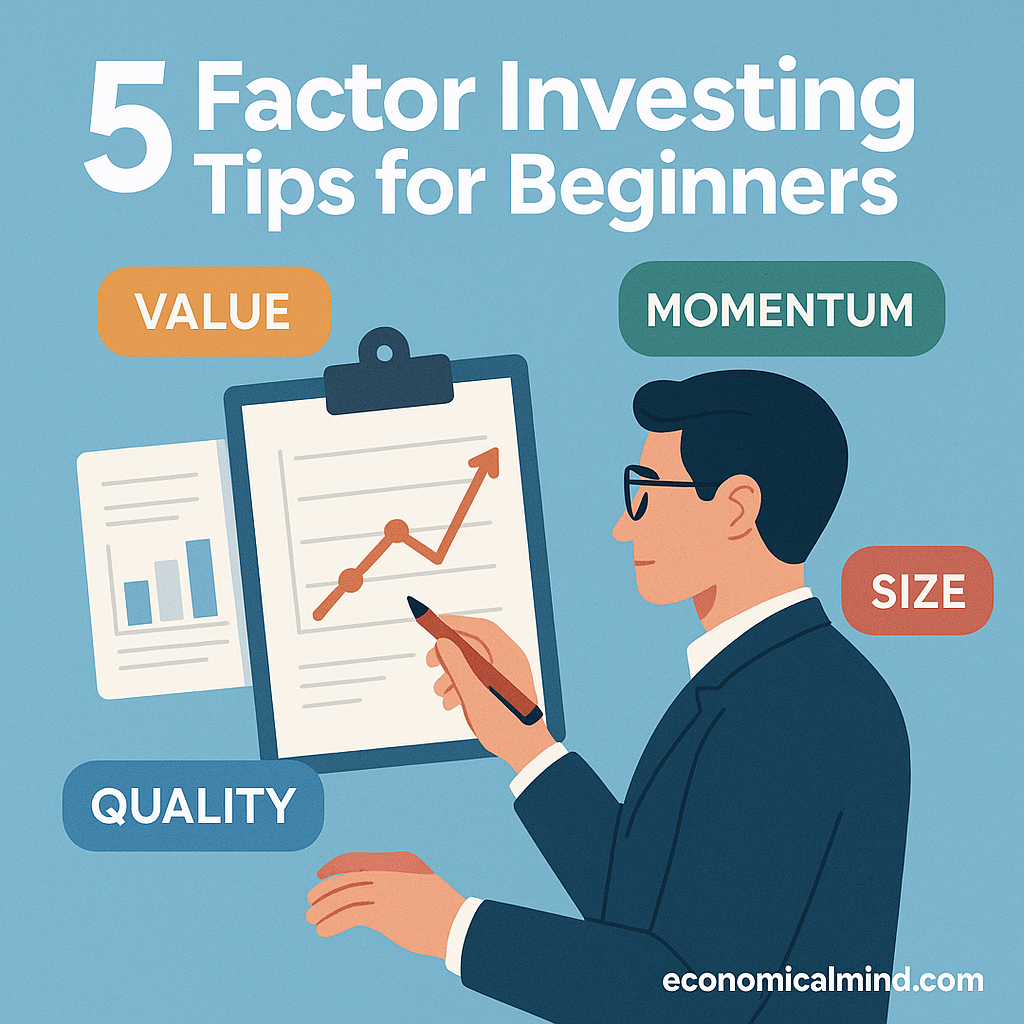
If you’ve ever wondered why some investors consistently outperform the market, the answer often lies in factor investing — a data-driven approach that targets specific traits or “factors” known to drive returns. Unlike traditional stock picking, factor investing relies on patterns backed by decades of research.
Here are five essential tips to help beginners understand and apply factor investing effectively.
1. Understand What Factor Investing Means
Factor investing is an investment strategy that focuses on measurable characteristics that explain differences in stock performance. Instead of buying random stocks, investors choose securities that score well on certain “factors” — or drivers of return.
The five most common factors are:
- Value: Stocks trading below their intrinsic worth.
- Size: Smaller companies that have higher growth potential.
- Momentum: Stocks that have performed well recently and continue trending upward.
- Quality: Companies with strong profitability and stable earnings.
- Low Volatility: Stocks that fluctuate less during market swings.
By combining these factors, investors aim to enhance long-term returns and reduce risk.
2. Choose the Right Factors for Your Goals
Different factors perform better under different market conditions.
For example:
- Value stocks tend to do well during market recoveries.
- Momentum shines in bull markets.
- Low volatility helps protect during downturns.
If your goal is steady growth, you might focus on quality and low volatility. If you’re comfortable with higher risk for higher returns, momentum and size could be more appealing.
The key is diversification — blending multiple factors can smooth performance over time.
3. Use ETFs and Index Funds to Simplify
You don’t need to be a data scientist to practice factor investing.
Many exchange-traded funds (ETFs) and mutual funds are designed around specific factors. For instance:
- iShares Edge MSCI USA Value Factor ETF (VLUE) targets value stocks.
- Invesco S&P 500 Momentum ETF (SPMO) focuses on momentum.
- Vanguard U.S. Quality Factor ETF (VFQY) emphasizes high-quality companies.
By investing in these funds, you gain diversified exposure to factors without needing to pick individual stocks or build models yourself.
4. Stay Patient and Avoid Overreacting
Factor strategies often go through cycles — periods when a factor underperforms.
For example, value investing lagged behind growth for much of the 2010s but has historically delivered strong long-term results.
Don’t abandon a strategy too soon just because it has a bad year.
Successful factor investors stay disciplined, allowing the underlying principles to work over time rather than chasing what’s “hot” in the short term.
5. Monitor and Rebalance Regularly
Even though factor investing is systematic, your portfolio still needs attention.
Revisit your holdings once or twice a year to ensure your factor exposure aligns with your goals.
Over time, some factors may become overweighted due to market performance. Rebalancing brings your portfolio back to its intended mix — helping maintain diversification and risk control.
Bonus Tip: Combine Factors Thoughtfully
Many investors use a multi-factor approach, blending two or more factors (like value + quality or momentum + low volatility) to achieve better risk-adjusted returns.
The goal isn’t to chase every factor — it’s to find a combination that fits your personal investing style and tolerance for market fluctuations.
Final Thoughts
Factor investing bridges the gap between passive and active investing — using evidence-based strategies to guide decisions while keeping costs low.
By understanding key factors, using ETFs or index funds, and staying disciplined through market cycles, you can harness the same tools used by institutional investors to strengthen your long-term portfolio.
Smart investing isn’t about luck — it’s about using data, patience, and consistency to your advantage.
